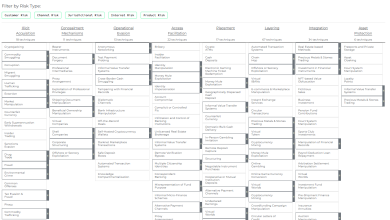The tools you use every day make the difference between smooth procedures and frustrating ones, yet many practitioners stick with outdated instruments simply because they’re familiar. Investing in proper dental tools for professionals isn’t about having fancy equipment—it’s about precision, efficiency, and reducing hand fatigue during long procedure days. Studies from the Journal of the American Dental Association show that improved instrumentation can reduce procedure time by 15-20% while improving clinical outcomes. With the average dentist performing over 4,000 procedures annually, even small improvements in tool quality add up to significant impacts on productivity and patient comfort. Modern dental instruments incorporate ergonomic designs and better materials that weren’t available even five years ago.
Hand Scalers and Curettes That Actually Make Sense
The Columbia and Gracey curettes sitting in your instrument tray might be the same designs from decades ago, but manufacturing quality varies wildly between suppliers. Look for hand scalers made from high-carbon stainless steel rather than standard stainless because they hold edges longer between sharpenings. The handle design matters more than people realize—instruments with larger diameter handles and textured grips reduce hand strain during long scaling sessions. Some newer designs use silicone grip inserts that provide cushioning without adding bulk. I’ve talked to hygienists who switched to ergonomic scalers and noticed the difference in hand fatigue within a week.
Composite Placement Instruments Beyond Basic Spatulas
If you’re still using basic flat spatulas for composite placement, you’re making the procedure harder than it needs to be. Specialized composite instruments with smaller working ends and ergonomic angles let you pack and contour materials more precisely in tight spaces. Teflon-coated tips prevent composite from sticking, which saves time and reduces waste. For posterior work, instruments with angled shanks give you better access to distal surfaces without asking patients to open wider than comfortable. The cost difference between basic and specialized composite instruments is maybe $15 per tool, but the efficiency gain is worth way more than that.
High-Quality Mirrors That Don’t Fog Up
Cheap mouth mirrors fog up constantly and have surface coatings that scratch off within months. Rhodium-coated mirrors cost more upfront but resist scratching and provide better image clarity than standard glass. Front-surface mirrors eliminate the double image you get with regular mirrors, which matters more than you’d think when you’re trying to work precisely. Some practices have switched to anti-fog mirrors that use thin film technology—these stay clear for entire procedures without needing constant wiping. For anterior work, smaller head sizes give you better visibility without taking up so much space that you’re fighting for room.
Explorers and Probes With Appropriate Tip Sharpness
The tactile sensitivity you get from explorers depends on tip sharpness and handle balance. Blunt explorers miss early carious lesions and make you press harder, which creates discomfort for patients. Pigtail explorers for interproximal areas should have tips sharp enough to catch on defects but not so aggressive that they damage demineralized enamel. Replace explorers when you notice decreased tactile feedback rather than waiting until they’re obviously dull. Periodontal probes need clear, easy-to-read markings because squinting at worn gradations slows down charting and increases measurement errors.
Articulating Paper and Marking Film That Shows Reality
Thin articulating paper shows you occlusal contacts better than thick paper that marks everything, giving false positives that waste time during adjustments. Two-sided red-blue marking film helps distinguish centric contacts from excursive movements in one step. Carbon-based marking films transfer color more consistently than wax-based papers, especially on wet surfaces. Horseshoe-shaped holders cost a few dollars and keep your fingers clean while giving patients something to bite on that doesn’t shift around. This seems like a minor detail until you’re doing precise occlusal adjustments and fighting with articulating paper that moves every time the patient closes.
Matrix Bands and Retainers That Don’t Fail Mid-Procedure
Tofflemire retainers are classic tools, but the quality varies tremendously between manufacturers. Cheap retainers have band locks that slip under pressure and spindles that strip out quickly. Stainless steel retainers with ball-bearing spindles last longer and maintain consistent tension. Pre-contoured sectional matrices save time on Class II restorations and often give better contours than straight bands, especially on molars. Separation rings need enough force to create actual contact without being so strong that they damage periodontal tissues. Having a few different ring strengths available makes sense because premolar anatomy needs different force than molar contacts.
High-Speed Handpiece Burs That Cut Efficiently
Cheap carbide burs dull fast and chatter during cutting, which increases procedure time and patient discomfort. Quality burs use better carbide grades and more precise manufacturing that keeps cutting edges sharp through multiple sterilization cycles. The blade design matters—crosscut burs remove material faster than plain cut for crown prep work. Diamond burs for finish work should have consistent grit size because irregular diamonds leave rough surfaces that need more polishing. Color-coded bur storage systems seem unnecessary until you’re hunting for the right grit in the middle of a procedure.




